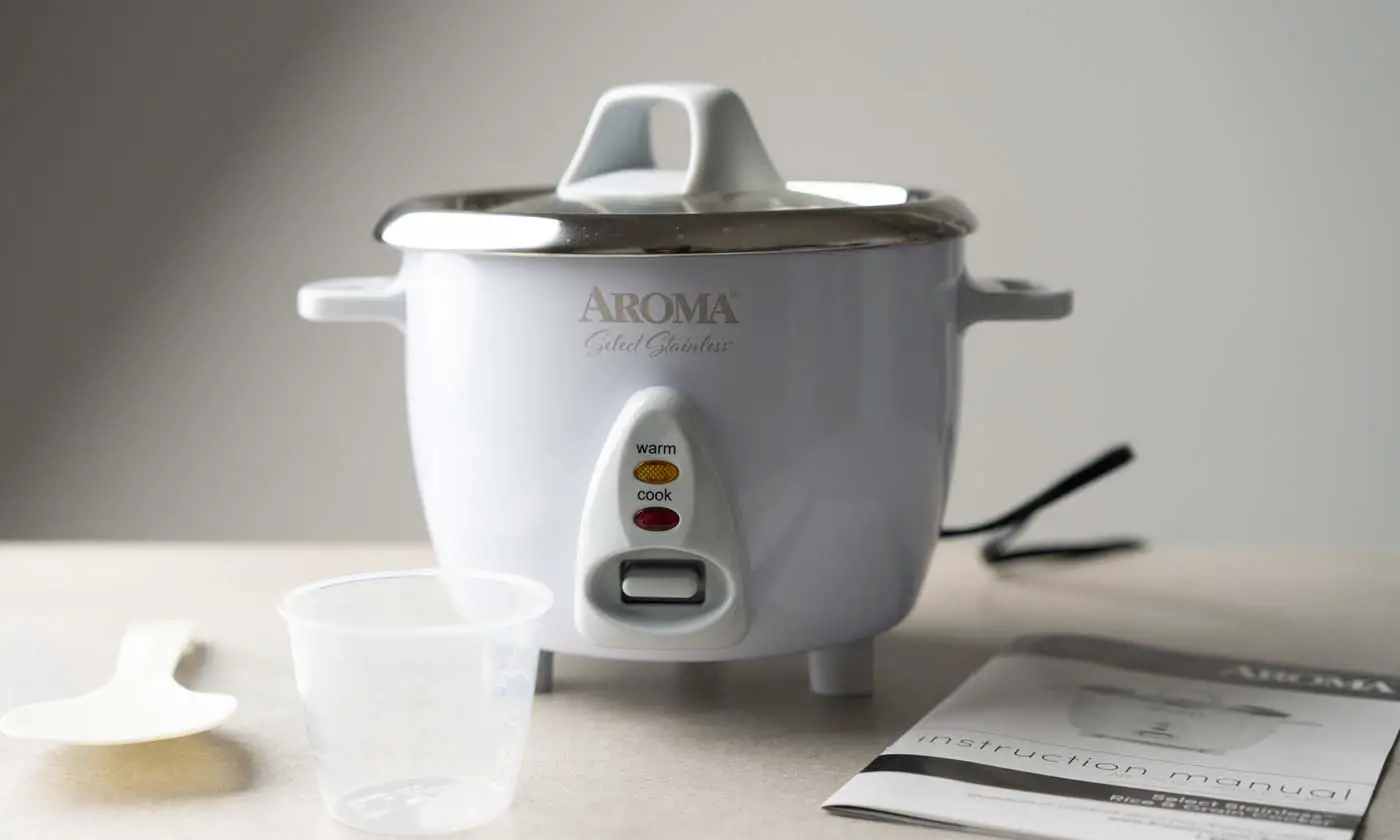

Articles
Why Is My Rice Cooker Not Working
Modified: October 27, 2024
Discover helpful articles on why your rice cooker may not be working and find solutions to get it back in working condition.
(Many of the links in this article redirect to a specific reviewed product. Your purchase of these products through affiliate links helps to generate commission for Storables.com, at no extra cost. Learn more)
Introduction
A rice cooker is a handy kitchen appliance that simplifies the process of cooking rice. It offers convenience and ensures that you get perfectly cooked rice every time. However, there can be instances where your rice cooker may not work as expected. It can be frustrating when your rice turns out undercooked, overcooked, or sticks to the bottom of the cooker.
In this article, we will explore some common issues that you may encounter with your rice cooker and provide troubleshooting tips to help you get your rice cooker back to working order. Whether it’s a lack of power, uneven cooking, or unusual noises, we will guide you through the steps to identify the problem and find a solution.
If you’re facing any issues with your rice cooker, read on to diagnose the problem and learn how to fix it. With a little troubleshooting, you’ll be enjoying perfectly cooked rice again in no time.
Key Takeaways:
- Troubleshooting Tips for Perfectly Cooked Rice
From checking power sources to adjusting cooking time, this guide offers practical solutions to common rice cooker issues, ensuring delicious results every time. - User Manual: Your Troubleshooting Bible
Consult your rice cooker’s user manual for tailored troubleshooting steps and safety precautions, empowering you to address issues effectively and maintain optimal performance.
Read more: Why Is My Rice Cooker Bubbling
Common Issues with Rice Cookers
Rice cookers are generally reliable appliances, but like any other kitchen device, they can encounter problems from time to time. Understanding these common issues can help you troubleshoot and resolve them effectively. Let’s take a look at some of the most frequently encountered problems with rice cookers:
- No Power: One of the most common issues with rice cookers is when they don’t turn on or show no signs of power. This can be caused by a faulty power cord, a blown fuse, or issues with the electrical outlet.
- Uneven Cooking: Another problem that many people face is when the rice is not evenly cooked. You may find that parts of the rice are overcooked and mushy, while other parts are undercooked and hard. This can be due to incorrect water-to-rice ratios or problems with the heating element in the cooker.
- Rice Sticking to the Bottom: Rice sticking to the bottom of the cooker is a common complaint. It can make the rice difficult to serve and clean up afterward. This issue often occurs because of using the wrong type of rice, inadequate water, or a damaged/non-stick inner pot.
- Rice Undercooked: If your rice turns out undercooked and hard, it can be disappointing. One reason for this problem is not using enough water or not allowing the rice to cook for the required amount of time. It can also happen if there is a malfunction with the thermostat inside the rice cooker.
- Rice Overcooked: On the other hand, if your rice comes out mushy and overcooked, it can be due to excessive water or cooking for too long. It can also occur if the rice cooker’s temperature sensor is malfunctioning.
- Unusual Noises or Smells: Strange noises or smells coming from your rice cooker can be a cause for concern. It could indicate a problem with the internal components, such as a malfunctioning fan or overheating.
These are just a few common issues that rice cooker users may encounter. Now that we’ve covered the potential problems, let’s move on to the solutions and troubleshooting tips to help you resolve these issues and get your rice cooker back to full functionality.
No Power
If your rice cooker is not turning on or showing any signs of power, there are a few things you can check to identify and resolve the issue:
- Check the Power Source: Make sure that the rice cooker is properly plugged into a working electrical outlet. Sometimes, the power cord may become loose or disconnected, so ensure it is securely connected to the rice cooker and the outlet. Also, try plugging another device into the same outlet to verify if the issue lies with the power source.
- Inspect the Power Cord: Examine the power cord for any visible damage, such as cuts or frayed wires. If you notice any damage, it may be necessary to replace the cord. Be sure to use a cord specifically designed for the rice cooker model you have.
- Check the Fuse: Some rice cookers are equipped with a fuse that can blow if there is a power surge or electrical issues. Locate the fuse compartment (usually at the base of the rice cooker) and check if the fuse is blown. If it is, replace it with a new fuse of the same rating.
- Reset the Rice Cooker: Many rice cookers have a reset button or a power reset feature. Look for a reset button or check the user manual to find out the specific method for resetting your rice cooker. Pressing the reset button can sometimes resolve minor electrical glitches and get the cooker working again.
- External Circuit Issues: If none of the above steps resolve the issue, there could be a problem with the electrical circuit in your house. Consider plugging the rice cooker into a different outlet or contacting an electrician to inspect the circuit for any faults or issues.
If you have gone through the steps above and your rice cooker still does not turn on, it may be necessary to seek professional assistance. Contact the customer support for your rice cooker brand or take it to a certified repair center for further evaluation and repair.
Remember to always refer to the user manual specific to your rice cooker model for troubleshooting instructions and safety precautions.
Now that we’ve addressed the issue of no power, let’s move on to the next common issue: uneven cooking.
Uneven Cooking
Uneven cooking is a common issue faced by many rice cooker users. It occurs when some parts of the rice are undercooked while others are overcooked or mushy. This problem can be frustrating, but there are several factors that may contribute to uneven cooking in a rice cooker, and solutions to remedy the issue:
- Water-to-Rice Ratio: The water-to-rice ratio is crucial for achieving evenly cooked rice. If you are using too little water, the rice may turn out dry and undercooked in certain areas. Conversely, if you use too much water, the rice can become overly moist and mushy. Make sure to follow the recommended water-to-rice ratio specified in the user manual of your rice cooker.
- Heating Element Issues: The heating element is responsible for evenly distributing heat throughout the rice cooker. If the heating element is malfunctioning or has uneven heat distribution, it can lead to uneven cooking. In such cases, contacting customer support or taking the rice cooker for professional repair may be necessary.
- Stirring the Rice: Another factor that contributes to uneven cooking is the lack of stirring during the cooking process. Rice cookers typically do not require stirring, but if you notice inconsistent results, you can try gently stirring the rice once or twice during the cooking cycle to distribute the heat more evenly.
- Improper Inner Pot Placement: Ensure that the inner pot is properly placed in the rice cooker. If it is not aligned correctly or is placed at an angle, it can result in uneven heat distribution and inconsistent cooking. Double-check the positioning of the inner pot to ensure it is sitting properly in the cooker.
- Cooking Time Adjustment: Experimenting with the cooking time can also help achieve more consistent results. If you find that your rice is consistently undercooked or overcooked in certain areas, try adjusting the cooking time slightly to see if it improves the overall results.
By paying attention to these factors and implementing the suggested solutions, you can significantly reduce the problem of uneven cooking in your rice cooker. Remember that practice and familiarity with your specific rice cooker are key to achieving consistently well-cooked rice.
In the next section, we will address the issue of rice sticking to the bottom of the cooker.
Rice Sticking to the Bottom
One of the common frustrations faced by rice cooker users is when rice sticks to the bottom of the cooker. This not only makes it difficult to clean but also affects the quality of the cooked rice. There are several reasons why rice may stick to the bottom, along with corresponding solutions:
- Wrong Rice Type: Different types of rice have different starch levels, which can affect how likely they are to stick. Using stickier rice varieties, such as sushi rice or short-grain rice, can increase the chances of rice sticking to the bottom. Consider using long-grain rice or basmati rice, which tends to be less sticky.
- Inadequate Water: Insufficient water during the cooking process can cause the rice to stick to the bottom. Make sure to follow the recommended water-to-rice ratio specified in the rice cooker’s user manual. Increasing the amount of water slightly can help prevent sticking.
- Damaged/Non-Stick Inner Pot: If your rice cooker’s inner pot is scratched, damaged, or no longer non-stick, it can contribute to rice sticking. Consider replacing the inner pot or using a separate non-stick liner to prevent sticking.
- Improper Cleaning: Sticky residue from previous cooking sessions can accumulate on the bottom of the rice cooker, leading to rice sticking. Clean your rice cooker thoroughly after each use, paying extra attention to the bottom of the pot using a non-abrasive sponge or cloth. Removing any residual stuck rice will help prevent further sticking during future cooking sessions.
- Pre-Rinsing the Rice: Rinsing the rice before cooking can remove excess starch and reduce the chances of sticking. Rinse the rice under cold water until the water runs clear before adding it to the rice cooker. This simple step can make a significant difference in preventing rice from sticking to the bottom.
By taking these factors into consideration and implementing the suggested solutions, you can minimize the issue of rice sticking to the bottom of your rice cooker. It’s worth noting that rice sticking may still occur occasionally, but by following these guidelines, you can significantly reduce the frequency and severity of the problem.
In the next section, we will address the issue of undercooked rice and provide troubleshooting tips.
Read more: Why Is My Rice Cooker Boiling Over
Rice Undercooked
Discovering that your rice is undercooked can be disappointing. It may be hard and grainy, indicating that it hasn’t cooked properly. Here are some possible reasons why your rice may be undercooked in your rice cooker, along with troubleshooting tips:
- Inadequate Water: The most common reason for undercooked rice is not using enough water. Insufficient water prevents the rice from absorbing enough moisture and cooking thoroughly. Check the recommended water-to-rice ratio in your rice cooker’s user manual and ensure you are using the correct measurements. Adjust the amount of water accordingly to avoid undercooked rice.
- Insufficient Cooking Time: Another possible reason for undercooked rice is not allowing enough time for it to cook. If your rice cooker has multiple cooking settings or modes, make sure you have selected the appropriate one for the type of rice you are cooking. Additionally, check the cooking time recommended for your specific rice variety and adjust accordingly. Increasing the cooking time slightly can help ensure thorough cooking.
- Malfunctioing Thermostat: If you’ve tried adjusting the water and cooking time without success, the issue may lie with the thermostat inside the rice cooker. The thermostat is responsible for regulating the temperature during cooking. If it is malfunctioning, it could prevent the rice from cooking properly. In such cases, it is best to reach out to customer support or take the rice cooker to a certified repair center for further inspection and repair.
- Cooking in High Altitudes: If you live in a high-altitude area, you may need to adjust the cooking time or water-to-rice ratio. Higher altitudes affect the boiling point and can require longer cooking times or slightly more water to achieve the desired results. Refer to altitude-specific cooking recommendations or experiment with adjustments until you achieve the desired level of doneness.
- Sticky Rice: Certain types of sticky rice, like glutinous or sweet rice, have a different cooking process compared to regular rice. They require more water and a longer soaking time before cooking. If you are cooking sticky rice and it turns out undercooked, consider increasing the soaking time and using more water to ensure proper cooking.
By considering these factors and implementing the troubleshooting tips provided, you can improve the cooking outcome and avoid undercooked rice in your rice cooker. Remember to make adjustments gradually and experiment with different settings until you achieve the desired results.
Next, we will address the issue of rice becoming overcooked and provide troubleshooting advice.
Rice Overcooked
Discovering that your rice is overcooked can be frustrating. Overcooked rice is mushy, sticky, and lacks the desired texture. Here are some possible reasons why your rice may be overcooked in your rice cooker, along with troubleshooting tips:
- Excessive Water: Using too much water is a common cause of overcooked rice. When there is an excess amount of water, the rice becomes mushy and overcooked. Make sure to follow the recommended water-to-rice ratio specified in your rice cooker’s user manual. Adjust the measurements accordingly to prevent overcooking.
- Long Cooking Time: Cooking rice for too long can also lead to overcooked results. If your rice cooker has multiple cooking settings or modes, ensure that you have selected the appropriate one for the type of rice you are cooking. Refer to the recommended cooking time for your specific rice variety and adjust accordingly. Decreasing the cooking time slightly can help prevent overcooking.
- Malfunctioning Temperature Sensor: The temperature sensor in your rice cooker plays a crucial role in regulating the cooking temperature. If it is malfunctioning, it can lead to excessive heat and overcooking of the rice. Contact customer support or consult a certified repair center if you suspect a faulty temperature sensor.
- Using the Wrong Rice Type: Different types of rice require different cooking times and water ratios. If you are using a rice cooker that is not optimized for a specific type of rice, it can result in overcooking. Use the appropriate type of rice for your rice cooker and adjust the water and cooking time accordingly.
- Inadequate Ventilation: Improper ventilation in the rice cooker can lead to excess steam and moisture build-up, which can cause overcooking. Make sure that the steam vent or release valve is not blocked or obstructed during the cooking process. This allows excess steam to escape and helps prevent the rice from becoming overcooked.
By taking these factors into consideration and implementing the troubleshooting tips provided, you can avoid overcooking your rice in the rice cooker. Remember to adjust the water, cooking time, and rice type appropriately to achieve optimal results.
Next, we will address the issue of unusual noises or smells that may occur during the use of a rice cooker.
Unusual Noises or Smells
Experiencing unusual noises or smells coming from your rice cooker can be concerning. These signs may indicate a potential problem with the appliance. Here are some common causes of unusual noises or smells in a rice cooker and troubleshooting tips:
- Burning Smell: A burning smell can indicate that the rice cooker is overheating. This can be caused by a malfunctioning heating element, damaged internal wiring, or excessive build-up of food debris. In such cases, immediately turn off the rice cooker and unplug it from the power source. Allow it to cool down and inspect the heating element and internal components for any visible damage. If you notice any issues, it is best to contact customer support or take the rice cooker for professional repair.
- Clicking or Popping Sounds: Clicking or popping sounds can occur during the cooking process due to the expansion and contraction of the rice cooker’s internal components. These sounds are typically normal and do not indicate a problem. However, if the sounds are accompanied by other issues like frequent power interruptions or inconsistent heating, it may be necessary to have the rice cooker inspected by a professional.
- Gurgling or Boiling Sounds: Gurgling or boiling sounds are common as the liquid inside the rice cooker reaches its boiling point. These sounds should not be a cause for concern as they indicate that the rice cooker is functioning as intended.
- Strange Odors: Unusual odors emanating from the rice cooker can be a sign of food residue or moisture buildup. Make sure to regularly clean the rice cooker, especially the inner pot and steam vent, to prevent the accumulation of food particles. If the odor persists even after thorough cleaning, it may be necessary to contact customer support for further assistance.
- Rattling or Loose Parts: If you hear rattling or notice loose parts within the rice cooker, this may indicate a mechanical issue. It is advisable to stop using the rice cooker immediately and contact customer support or a certified repair center to have it inspected and repaired.
It’s important to note that rice cookers can emit sounds and odors to some extent during normal operation. However, if you suspect a problem or the noises and smells are persistent and abnormal, it is best to exercise caution and seek professional assistance if needed.
In the next section, we will provide solutions and troubleshooting tips to help resolve common issues with rice cookers.
Check if the power cord is properly plugged in and the outlet is working. Also, make sure the inner pot is placed correctly and the lid is tightly sealed. If the rice cooker still doesn’t work, it may need to be repaired or replaced.
Solutions and Troubleshooting Tips
When encountering issues with your rice cooker, there are several solutions and troubleshooting tips you can employ to resolve the problem. Here are some general steps you can take:
- Check the Power Source: Ensure that the rice cooker is properly plugged into a working electrical outlet and that the power cord is securely connected.
- Inspect the Heating Element: Examine the heating element for any visible damage or signs of malfunction. If necessary, contact customer support or a certified repair center for further assistance.
- Clean the Cooker Properly: Thoroughly clean the rice cooker, paying special attention to the inner pot, steam vent, and other removable parts. Use a non-abrasive sponge or cloth to remove any stuck-on food debris.
- Adjust Cooking Time and Water Ratio: Refer to the recommended cooking time and water-to-rice ratios specified in your rice cooker’s user manual. Make adjustments as needed for consistent and well-cooked rice.
- Consult the User Manual: Always refer to the user manual specific to your rice cooker model for troubleshooting instructions and safety precautions. The manual will provide specific guidance for the issues you may encounter with your particular rice cooker.
- Contact Customer Support: If the problem persists or if you are unsure about the best course of action, contact the customer support for your rice cooker brand. They will be able to offer personalized assistance and additional troubleshooting steps.
- Consider Professional Repair: If all other troubleshooting steps fail, and you are still experiencing issues with your rice cooker, it may be necessary to seek professional repair. Contact the manufacturer or a certified repair center to have your rice cooker inspected and repaired by professionals.
Remember that rice cookers can vary in design, features, and functionalities. It is essential to follow the specific instructions provided by the manufacturer and to use the recommended troubleshooting steps tailored to your specific model.
By following these solutions and troubleshooting tips, you can address common issues with rice cookers and restore your appliance to proper working order.
Now that we have covered various troubleshooting techniques, let’s conclude our article.
Read more: Why Is My Rice Sticky In The Rice Cooker
Check the Power Source
If your rice cooker is not turning on or showing any signs of power, the first troubleshooting step is to check the power source. In many cases, a simple power-related issue can be the cause of the problem. Here’s what you can do:
- Verify the Power Connection: Ensure that the rice cooker is properly plugged into a working electrical outlet. Sometimes, the power cord may become loose or disconnected, so double-check that it is securely connected to both the rice cooker and the outlet.
- Test the Outlet: Plug another device, such as a lamp or charger, into the same outlet to verify if it is functioning properly. If the alternate device does not work either, there may be an issue with the outlet or the overall electrical circuit. In such cases, try plugging the rice cooker into a different outlet to see if it resolves the power problem.
- Check the Power Cord: Inspect the power cord of the rice cooker for any visible damage, such as cuts or frayed wires. Damaged cords can prevent the flow of electricity and cause the rice cooker to not function. If you notice any damage, it is crucial to replace the cord with a new one specifically designed for your rice cooker model.
- Blown Fuse: Some rice cookers are equipped with a fuse that can blow if there is a power surge or electrical issues. Locate the fuse compartment, typically located at the base of the rice cooker, and check if the fuse is blown. If the fuse appears to be damaged or has a discolored or broken wire inside, replace it with a new fuse of the same rating as specified in the user manual.
- Reset the Rice Cooker: Many rice cookers have a reset button or a power reset feature. Look for a small button labeled “Reset” or check the user manual to find the exact method for resetting your rice cooker. Pressing the reset button can sometimes resolve minor electrical glitches and get the cooker working again.
By checking the power source and troubleshooting any power-related issues, you can determine if the lack of power is the reason why your rice cooker is not working. However, if none of these steps resolve the problem, it may be necessary to contact customer support for further assistance or take the rice cooker to a certified repair center.
Remember to always prioritize safety and follow the instructions provided in the user manual specific to your rice cooker model when dealing with power-related issues.
Now that we’ve addressed the power source, let’s move on to troubleshooting the next common issue: uneven cooking.
Inspect the Heating Element
If you’re experiencing issues with your rice cooker, such as uneven cooking or a lack of power, it may be necessary to inspect the heating element. The heating element is a crucial component in the rice cooker that ensures even and consistent cooking. Here’s how you can inspect the heating element:
- Disconnect the Rice Cooker: Before inspecting the heating element, ensure that the rice cooker is unplugged and cool to the touch. This step is crucial for your safety.
- Locate the Heating Element: The heating element is usually located at the bottom of the rice cooker’s inner pot or on the base of the cooker. It is responsible for generating the heat necessary to cook the rice evenly. Take a moment to familiarize yourself with the heating element’s location within your specific rice cooker model.
- Look for Visible Damage: Inspect the heating element for any visible signs of damage, such as discoloration, cracks, or burnt areas. These issues can indicate a malfunctioning element and may affect the cooker’s ability to heat up properly. If you notice any damage, it is recommended to contact customer support or a certified repair center for further assistance.
- Clean the Heating Element: Over time, the heating element may accumulate food residue or mineral deposits, affecting its performance. Using a soft cloth or sponge, gently clean the heating element to remove any debris or build-up. Be cautious not to apply excessive force or use abrasive materials that could damage the element.
- Ensure Proper Alignment: Check if the heating element is properly aligned or if it has become loose. If it is misaligned, carefully adjust it to ensure proper contact with the inner pot or base of the cooker. Improper alignment can affect the heating element’s efficiency and lead to uneven cooking.
By inspecting the heating element and addressing any visible damage or cleaning needs, you can improve the performance of your rice cooker. However, if the heating element appears to be functioning properly and you’re still experiencing issues, it may be necessary to contact customer support or a certified repair center for further evaluation and repair.
Remember to always prioritize your safety and follow the instructions provided in the user manual specific to your rice cooker model when inspecting or cleaning the heating element.
Now that we’ve inspected the heating element, let’s move on to troubleshooting the next common issue: rice sticking to the bottom.
Clean the Cooker Properly
Cleaning your rice cooker properly is essential for maintaining its functionality and ensuring the best cooking results. Regular and thorough cleaning helps remove food residue, prevents the accumulation of debris, and keeps your rice cooker in optimal condition. Here are the steps to clean your rice cooker properly:
- Unplug the Rice Cooker: Before starting the cleaning process, make sure the rice cooker is unplugged and completely cool. This precaution ensures your safety during the cleaning procedure.
- Remove the Inner Pot: Take out the inner pot of the rice cooker and empty any remaining rice or water. Separate any additional removable parts, such as the steam tray or condensation collector, if applicable.
- Wash the Inner Pot: Wash the inner pot thoroughly with warm water and a mild dish soap. Use a non-abrasive sponge or cloth to gently scrub away any food particles or residue. Pay extra attention to the bottom of the pot where rice is more likely to stick.
- Clean the Exterior and Control Panel: Wipe down the exterior of the rice cooker, including the control panel, with a damp cloth or sponge. Avoid using excessive water directly on the control panel to prevent damage to the electrical components.
- Address Stuck-On Food: If there are any stubborn, stuck-on foods or stains, create a paste using baking soda and water. Apply the paste to the affected areas and let it sit for a few minutes before scrubbing with a non-abrasive sponge. Rinse thoroughly with water.
- Clean the Steam Vent: The steam vent allows the release of excess steam during the cooking process. Use a brush or a cotton swab soaked in warm, soapy water to clean the vent and remove any build-up. Ensure it is free from blockages that can hinder the proper functioning of the rice cooker.
- Wipe the Heating Plate/Element: Gently wipe the heating plate or element, located at the bottom of the rice cooker, with a damp cloth to remove any food particles or residue.
- Dry Thoroughly: After cleaning all the components, make sure to dry them completely before reassembling the rice cooker. Any moisture left behind can lead to mold or affect the performance of the cooker.
Following these steps and regularly cleaning your rice cooker will help maintain its longevity and ensure that your cooked rice comes out perfectly every time. It is important to refer to the specific cleaning instructions provided in the user manual for your rice cooker model, as certain materials or parts may require specific care.
Now that we’ve addressed cleaning the rice cooker, let’s move on to troubleshooting the next common issue: adjusting the cooking time and water ratio.
Adjust Cooking Time and Water Ratio
One of the key factors in achieving perfectly cooked rice is finding the right balance between cooking time and water ratio. Adjusting these two elements can greatly impact the texture and quality of your cooked rice. Here are some tips for adjusting the cooking time and water ratio in your rice cooker:
- Follow the Recommended Ratios: Consult the user manual or cooking instructions provided with your rice cooker for the recommended water-to-rice ratio. Different rice varieties may require slightly different ratios to achieve the desired texture. Start with the recommended ratio and adjust as needed based on personal preference.
- Experiment with Water Amount: If you find that your rice is consistently undercooked or overcooked, you can adjust the water amount. Adding a little more water than the recommended ratio can result in softer, more tender rice, while reducing the water slightly can lead to firmer, less moist rice. Keep in mind that the desired texture may vary based on personal preference.
- Adjust the Cooking Time: If your rice consistently turns out undercooked or overcooked, consider adjusting the cooking time. If the rice is undercooked, increase the cooking time slightly to allow for more thorough cooking. Conversely, if the rice is overcooked and mushy, reduce the cooking time to achieve a firmer texture. Experiment with small adjustments until you find the ideal cooking time for your preferred rice consistency.
- Factor in External Variables: External factors such as the size and quantity of rice, the wattage of the rice cooker, and altitude can impact cooking times and water absorption. Take these factors into consideration when adjusting the cooking time and water ratio. Higher altitudes may require longer cooking times, while larger quantities of rice may require more water.
- Use the Rice Cooker’s Features: Some rice cookers have various cooking modes or settings that can be customized for specific rice types. Explore these features and adjust them accordingly to achieve optimal cooking results. For example, some rice cookers have specific settings for white rice, brown rice, or sushi rice, each requiring different cooking times and water ratios.
It’s important to note that the precise cooking times and water ratios can vary depending on the specific rice cooker model and the type of rice being cooked. Therefore, it’s highly recommended to refer to the user manual or cooking instructions provided by the manufacturer for accurate information and guidelines.
By adjusting the cooking time and water ratio, you can achieve perfectly cooked rice that meets your preferences. Take the time to experiment and fine-tune these factors to achieve the desired results.
Now that we’ve addressed adjusting the cooking time and water ratio, let’s move on to troubleshooting the next common issue: consulting the user manual.
Read more: Why Is My Rice Cooker Making Popping Noises
Consulting the User Manual
When facing issues or seeking guidance with your rice cooker, one of the most valuable resources at your disposal is the user manual. The user manual contains important information specific to your rice cooker model, including troubleshooting tips, cooking instructions, and safety precautions. Here’s how consulting the user manual can help you:
- Locate the User Manual: If you haven’t already done so, locate the user manual that came with your rice cooker. It is typically provided by the manufacturer and contains detailed instructions and information about operating and maintaining your specific rice cooker model.
- Identify the Specific Issue: Determine the specific issue you are facing with your rice cooker. Whether it’s related to power, cooking time, water ratio, or any other aspect, understanding the problem will help you navigate the user manual more effectively.
- Review Troubleshooting Section: Check the troubleshooting section of the user manual for guidance on the specific issue you are experiencing. Manufacturers often provide a dedicated troubleshooting section that addresses common problems and offers step-by-step solutions to resolve them. Follow the instructions provided to troubleshoot the issue.
- Refer to Cooking Instructions: The user manual typically includes cooking instructions specific to your rice cooker model. It will provide recommended water-to-rice ratios, cooking times, and any additional steps for different types of rice. Following these instructions will help you achieve optimal cooking results.
- Safety Precautions: Ensure that you read and understand the safety precautions outlined in the user manual. This includes information regarding electrical safety, proper handling, and care of the rice cooker to prevent accidents or damage. Adhering to the safety guidelines will help you use the rice cooker safely and efficiently.
- Contact Customer Support: If you’ve followed the troubleshooting steps in the user manual and still haven’t resolved the issue, the manual will provide contact information for customer support. Reach out to the manufacturer’s customer support with the specific problem you’re facing, and they can provide further assistance or direct you to a service center if needed.
Remember, the user manual is designed to provide comprehensive information and guidance specific to your rice cooker model. It is an invaluable resource that can help you understand your specific rice cooker’s features, functions, and troubleshooting steps.
By consulting the user manual, you can gain insights into the proper operation of your rice cooker and effectively troubleshoot common issues. It’s always a good idea to keep the user manual in a safe and easily accessible place for future reference.
Now that we’ve addressed consulting the user manual, let’s move on to troubleshooting the next common issue: contacting customer support.
Contacting Customer Support
If you have followed the troubleshooting steps outlined in the user manual and are still experiencing issues with your rice cooker, it may be necessary to contact customer support. Customer support teams are trained to provide assistance, guidance, and solutions to specific problems related to your rice cooker model. Here’s how you can contact customer support:
- Locate Contact Information: Refer to the user manual or the manufacturer’s website to find the contact information for customer support. This may include a phone number, email address, or a support form on their website.
- Email or Online Contact: If an email address or online support form is provided, you can write a detailed message explaining the issue you are facing. Be sure to include important information, such as the model number of your rice cooker and a clear description of the problem. Provide any troubleshooting steps you have already attempted to help the customer support team understand the situation.
- Phone Support: If a phone number is available, you can directly call customer support. Be prepared to provide your rice cooker’s model number and a detailed explanation of the issue. The customer support representative will guide you through additional troubleshooting steps or provide recommendations based on the specific problem.
- Be Polite and Patient: When contacting customer support, remember to be polite and patient. Understand that they are there to assist you, and by maintaining a positive and respectful attitude, you are more likely to receive helpful and efficient assistance. Follow any instructions or suggestions given by the customer support representative and ask for clarification whenever necessary.
- Warranty Information: If your rice cooker is still under warranty, be sure to have the purchase details and warranty information readily available. Customer support may require this information to validate your warranty and provide appropriate solutions.
- Follow Up as Needed: If the initial contact with customer support does not resolve the issue, follow up as necessary. Provide additional details or request further assistance if you are still facing problems. Customer support is there to help and will typically work with you until the issue is resolved.
Remember that customer support is there to assist you with any issues you may encounter with your rice cooker. They can provide expert advice, additional troubleshooting steps, and direct you to authorized service centers, if needed.
By contacting customer support, you can get personalized assistance and specific solutions for the problem you are facing with your rice cooker.
Now that we’ve addressed contacting customer support, let’s summarize the troubleshooting process and conclude our article.
Conclusion
In conclusion, rice cookers are convenient and efficient kitchen appliances that simplify the process of cooking rice. However, they can encounter common issues that may affect the cooking quality and overall performance. By following the troubleshooting tips and solutions provided in this article, you can effectively address these issues and get your rice cooker back to working order.
We discussed common problems such as no power, uneven cooking, rice sticking to the bottom, rice being undercooked or overcooked, and unusual noises or smells. For each issue, we provided step-by-step guidance on how to troubleshoot and resolve the problem. From checking the power source to inspecting the heating element, cleaning the cooker properly, adjusting the cooking time and water ratio, consulting the user manual, and contacting customer support, you have a range of solutions to address any issues you may encounter.
It is important to consult the user manual specific to your rice cooker model for accurate troubleshooting instructions and safety precautions. The user manual is a valuable resource that provides comprehensive information about your rice cooker’s features, functions, and maintenance guidelines.
Remember to prioritize safety and always ensure that your rice cooker is unplugged and cool before attempting any troubleshooting or maintenance. If the issue persists despite your efforts, contacting customer support or taking your rice cooker to a certified repair center may be necessary.
By following the troubleshooting tips and solutions provided, you can enjoy perfectly cooked rice every time and extend the lifespan of your rice cooker.
Thank you for reading this comprehensive guide on troubleshooting common issues with rice cookers. We hope you found it helpful, and may you continue to enjoy deliciously cooked rice with your rice cooker!
Frequently Asked Questions about Why Is My Rice Cooker Not Working
Was this page helpful?
At Storables.com, we guarantee accurate and reliable information. Our content, validated by Expert Board Contributors, is crafted following stringent Editorial Policies. We're committed to providing you with well-researched, expert-backed insights for all your informational needs.
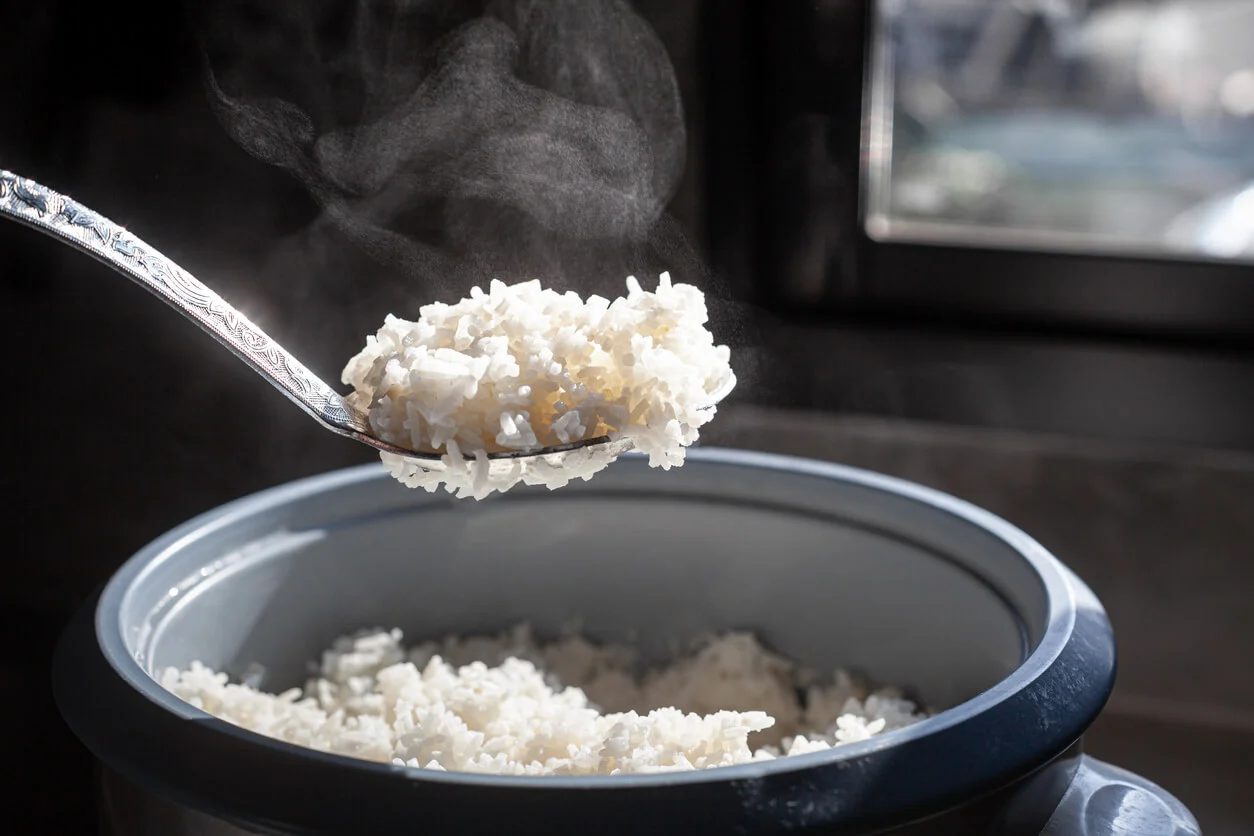
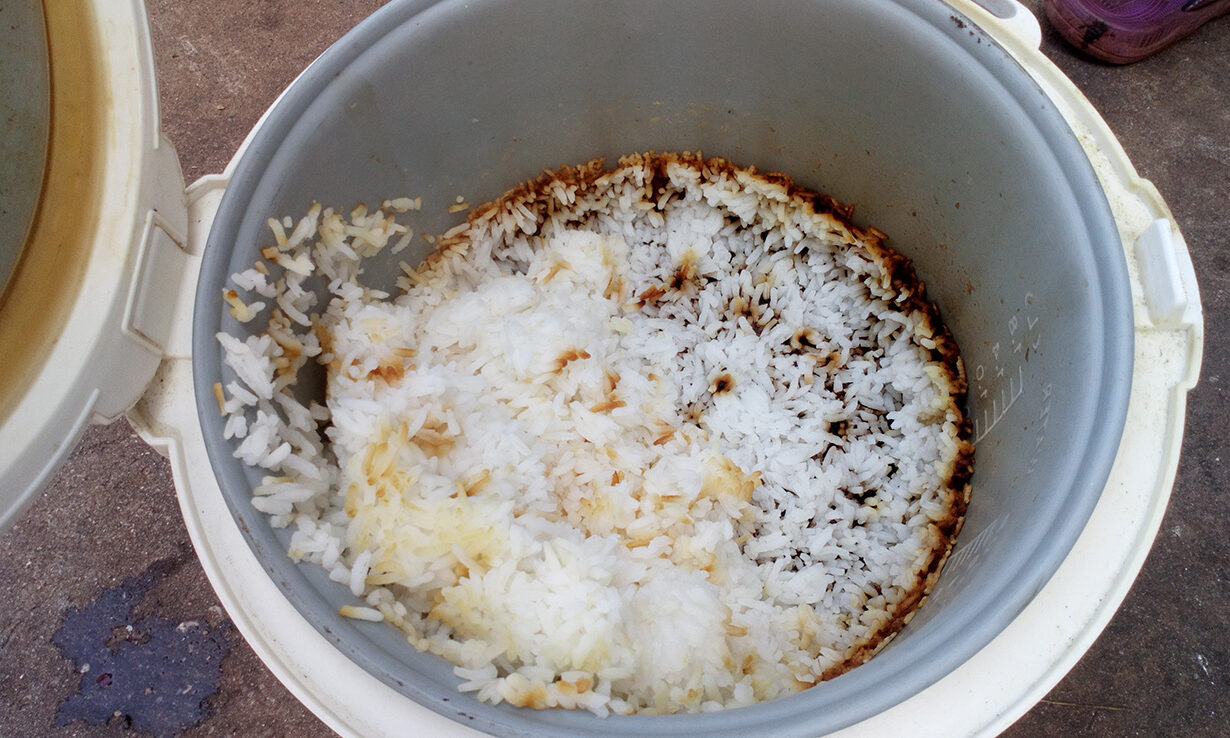


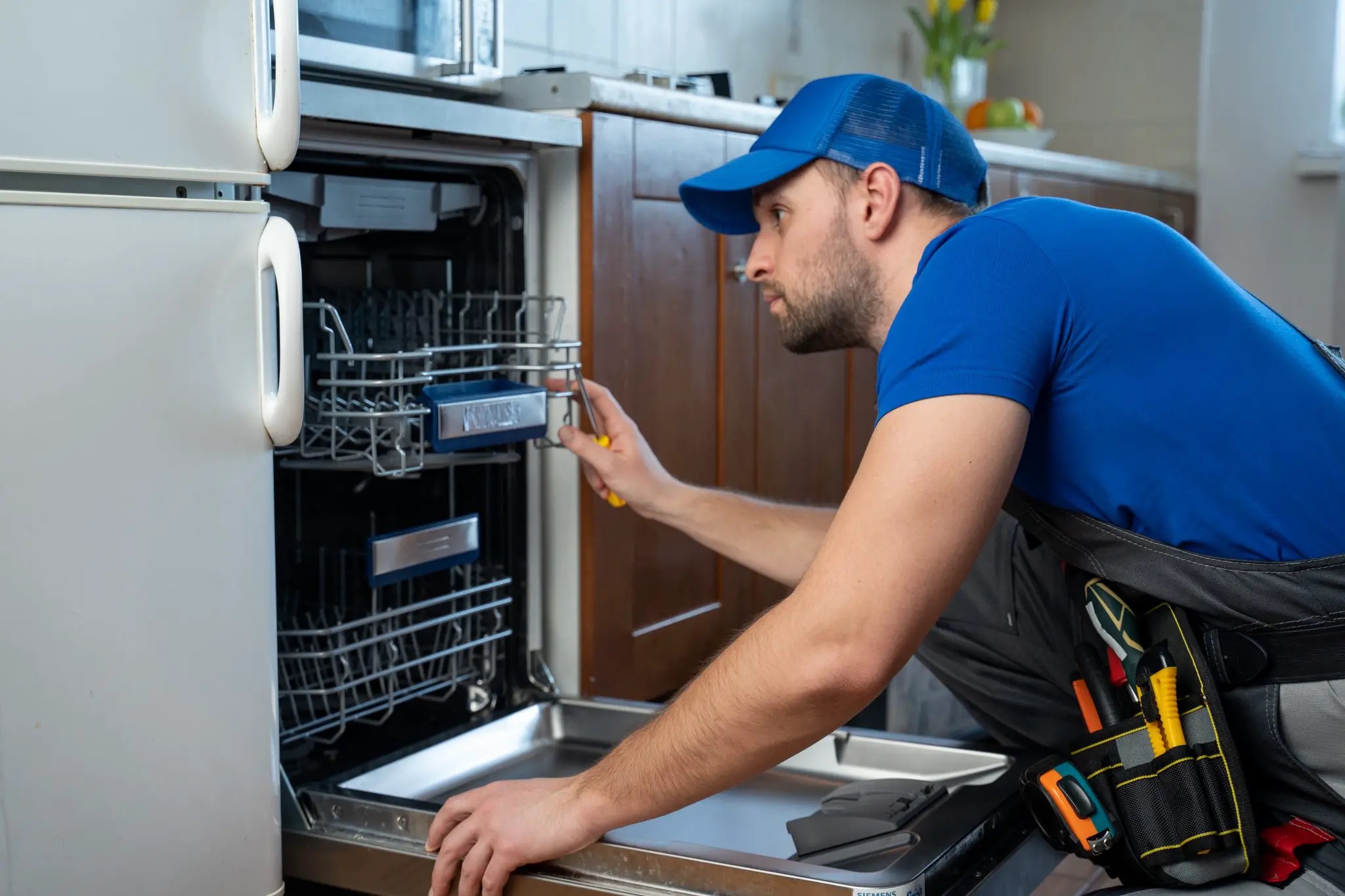

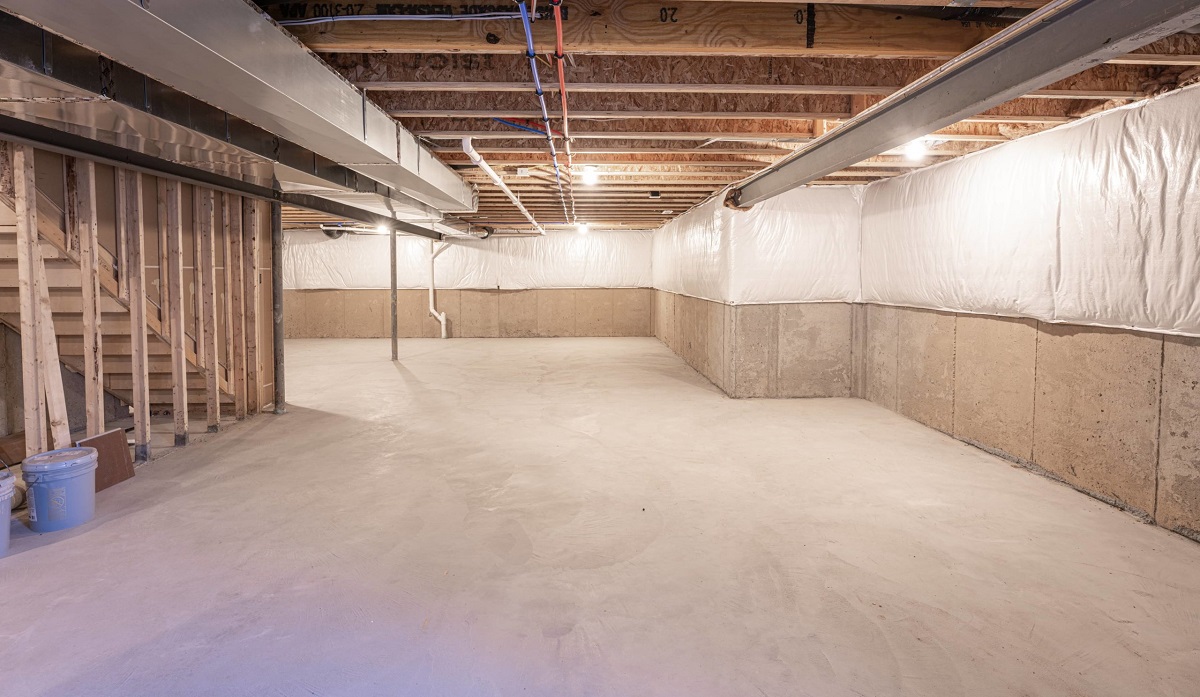
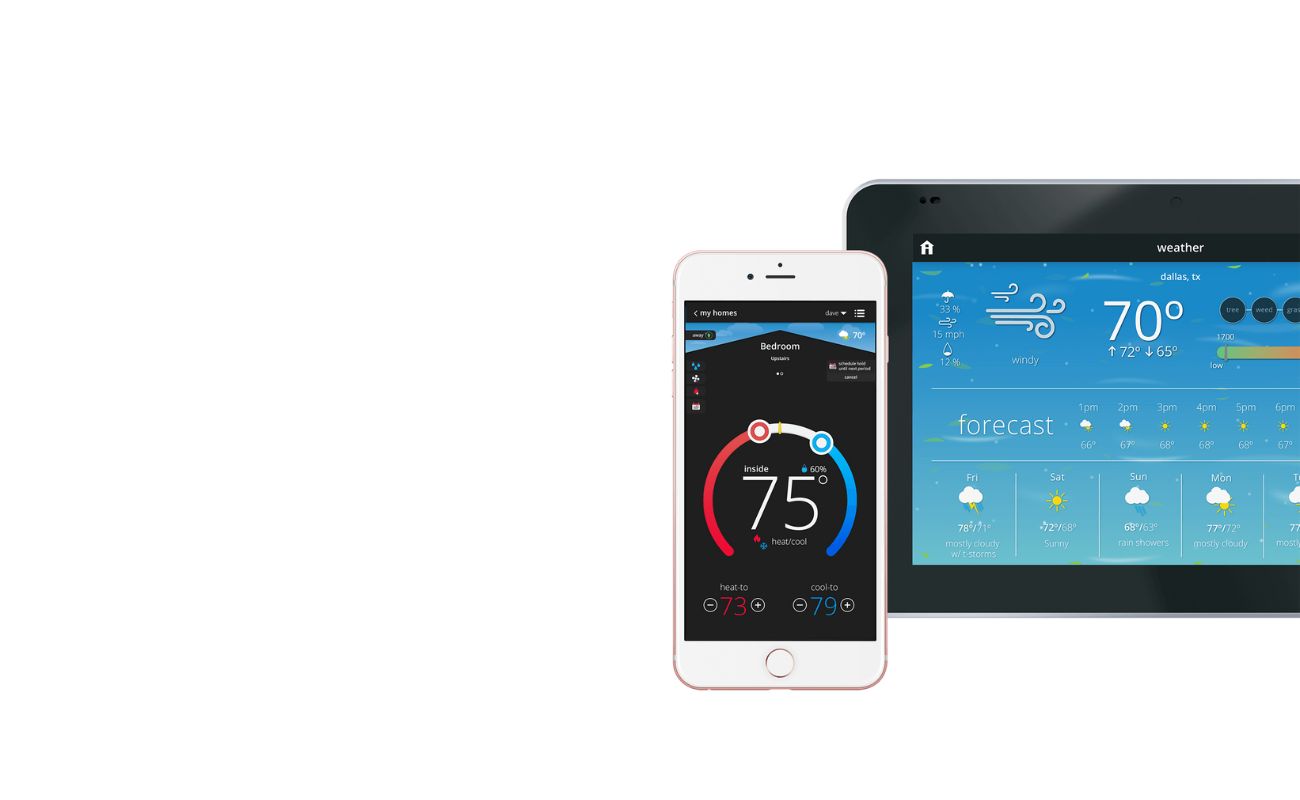
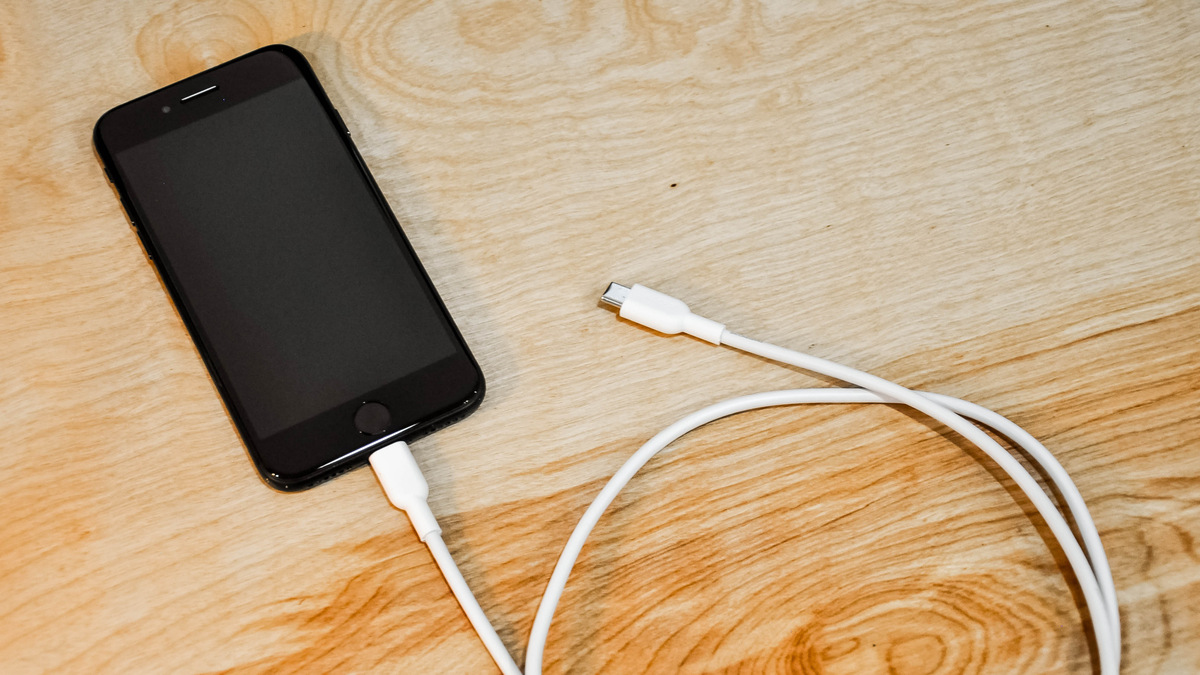
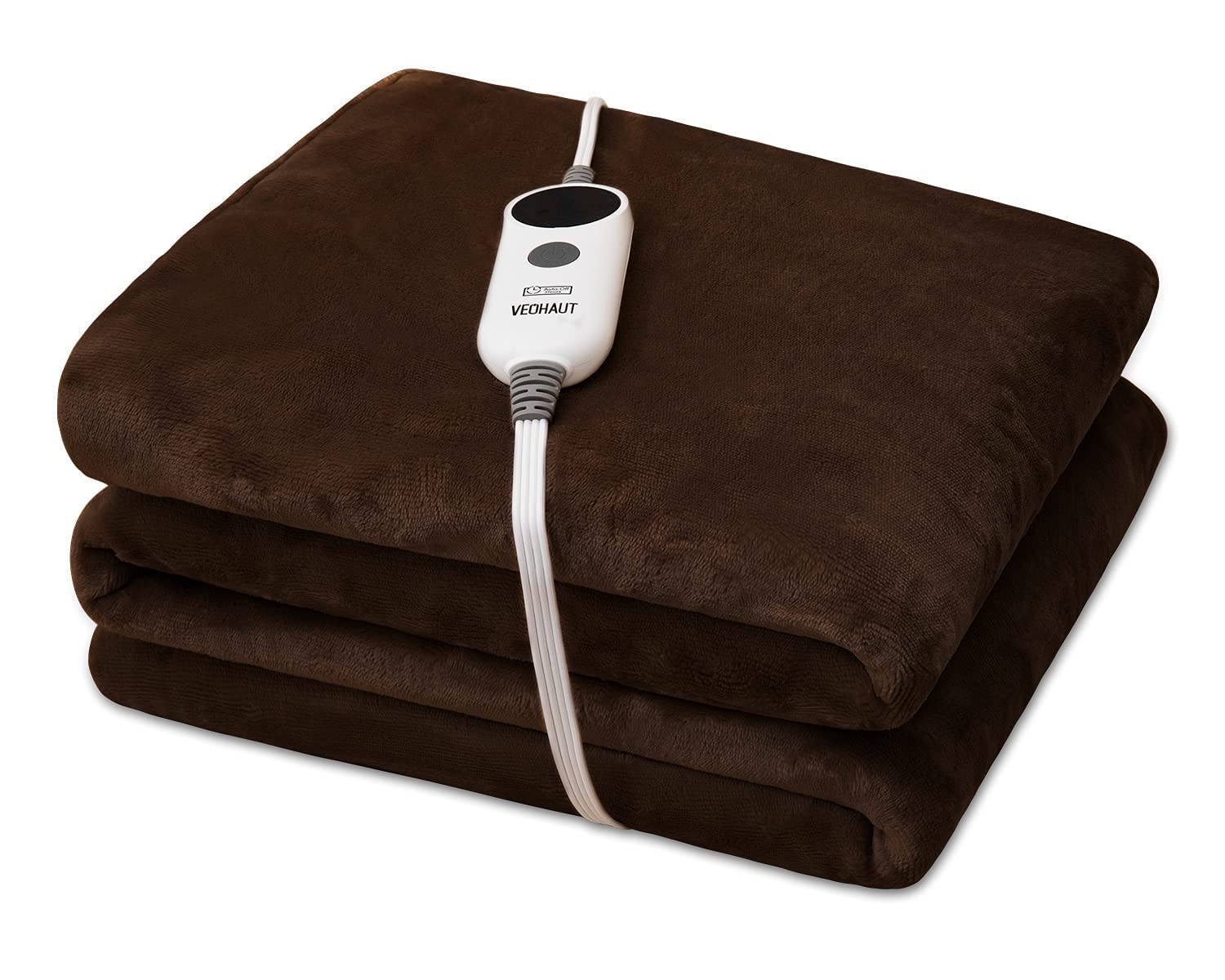
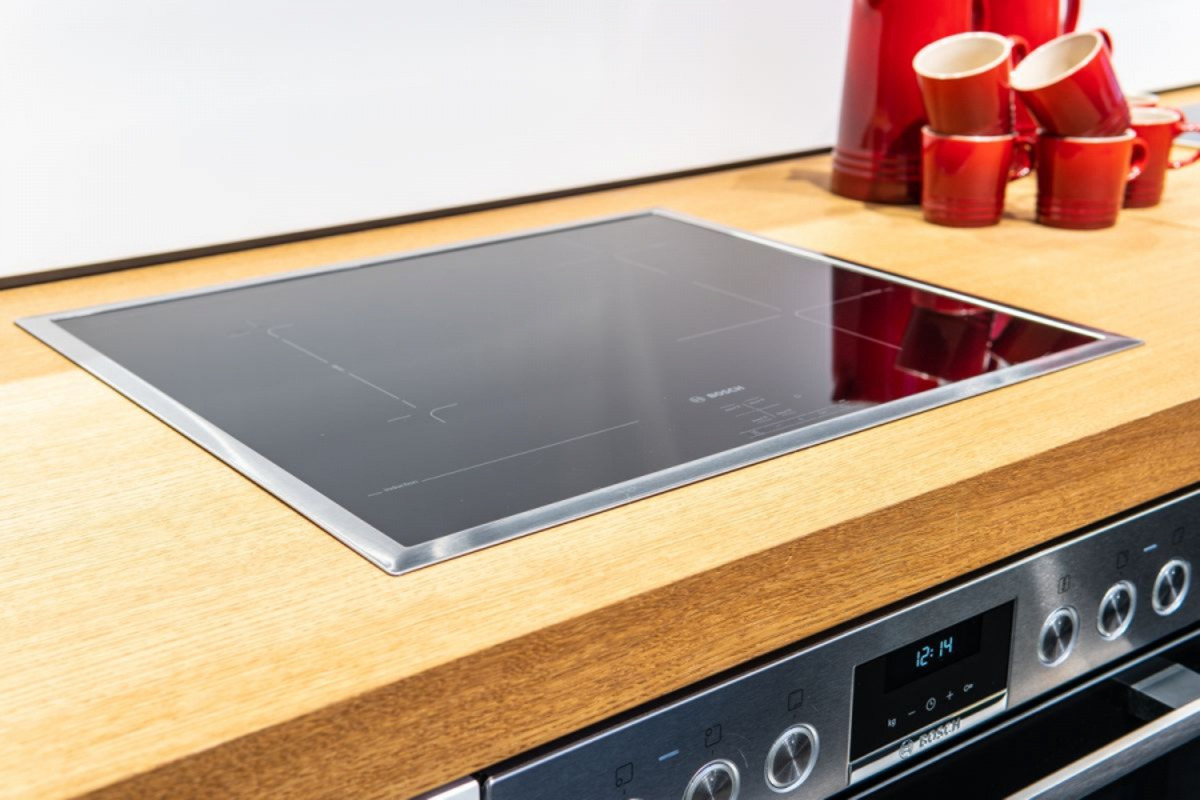
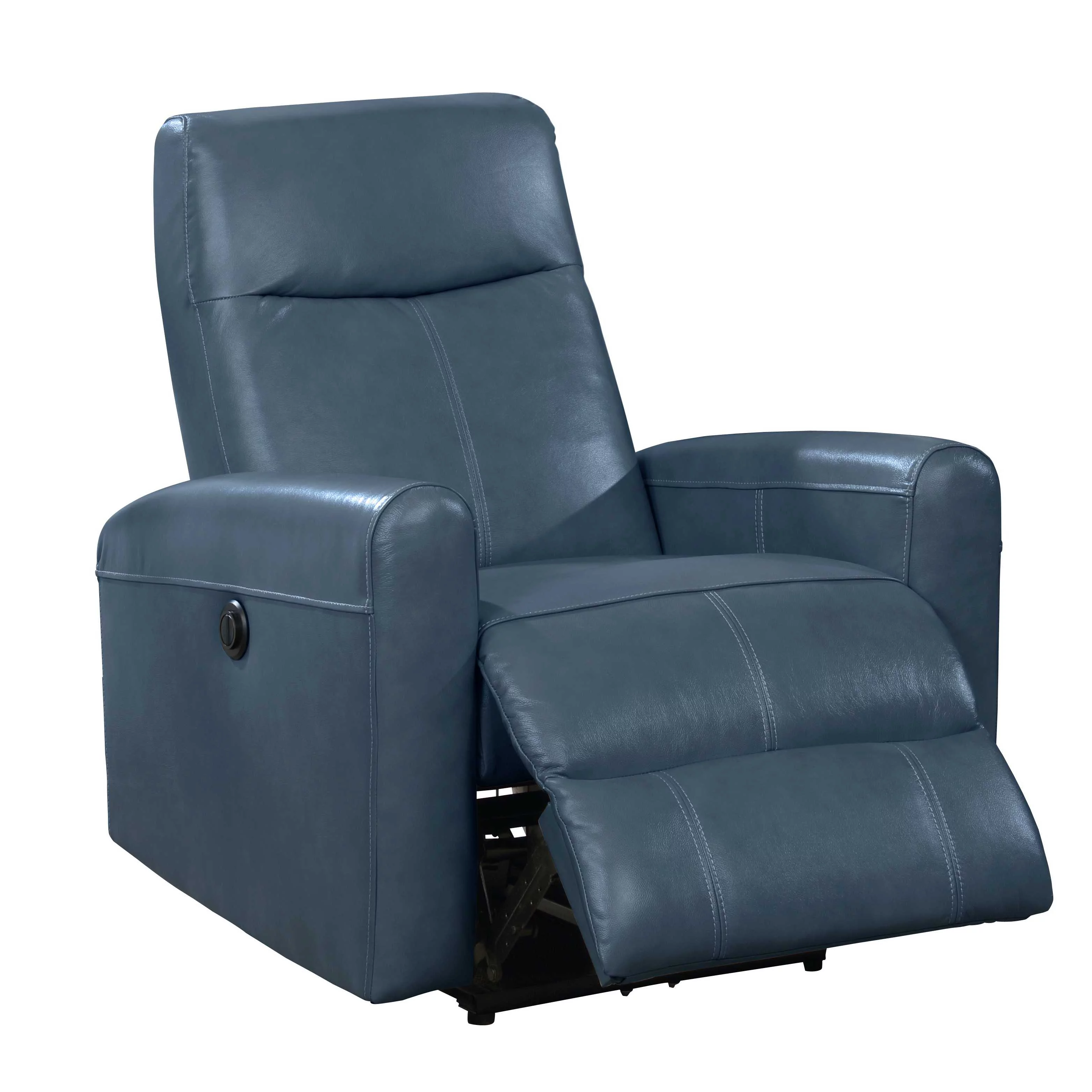

0 thoughts on “Why Is My Rice Cooker Not Working”